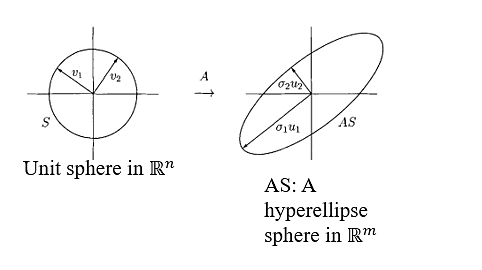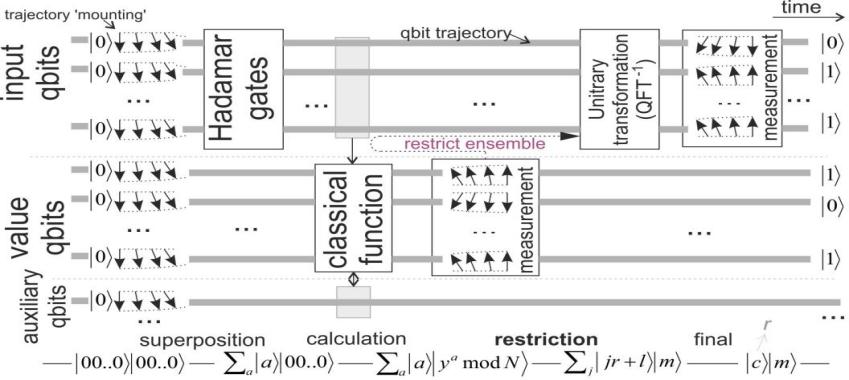

Volume 125
Published on September 2025Volume title: Proceedings of CONF-APMM 2025 Symposium: Multi-Qubit Quantum Communication for Image Transmission over Error Prone Channels
Molecular motors are sophisticated protein complexes that transform chemical energy into directed mechanical motion, underpinning critical cellular processes such as intracellular transport, cell division, and muscle contraction. Operating far from equilibrium, these motors challenge classical thermodynamic descriptions, necessitating frameworks like stochastic thermodynamics and fluctuation theorems to describe their energy conversion, efficiency, and entropy production quantitatively. This review synthesizes theoretical understandings of molecular motor operation, highlighting the integration of stochastic thermodynamics with computational simulations and cutting-edge experimental techniques, including nanopore-based single-molecule measurements. Key topics discussed include mechanisms of motion, thermodynamic efficiency, performance trade-offs, and the essential role of entropy production in maintaining directionality. Finally, we identify unresolved challenges and suggest future research directions to deepen our fundamental insights and enhance practical applications in biotechnology and nanotechnology.

 View pdf
View pdf


Ultra-Wideband (UWB) technology signifies a significant leap forward in wireless communication techniques. This state-of-the-art method utilizes the direct modulation of impulse signals with rapid rise and fall times, achieving a signal bandwidth that can extend into several gigahertz (GHz). The origins of UWB technology can be traced back to pulse communication methods developed in the 1960s, which provided the foundational principles for its evolution. UWB technology utilizes ultra-wideband pulses that exhibit an exceptionally wide frequency spectrum, enabling efficient communication across a range of applications. Consequently, it is often classified as either wireless carrier communication technology or baseband communication technology. UWB finds its primary application in military radar systems, high-precision positioning solutions, and communication systems designed for minimal interception and detection, highlighting its essential function in both defense and civilian sectors.

 View pdf
View pdf


Understanding the relationship between acceleration, force, and mass is essential in classical mechanics and forms the basis of Newton’s Second Law of Motion. This relationship not only plays a critical role in theoretical physics but also has widespread applications in fields such as engineering, transportation, and space exploration. This article uses experimental and theoretical analysis to research the influencing factors of the acceleration in the rectilinear motion, especially the relationship between. Through a simple small experiment, and Newton’s second law, the final analysis comes to a conclusion. And in the end find the acceleration is related to force and mass. The experimental data are basically consistent with the theory, and the error is reduced by every means. This study serves as a valuable educational exercise in understanding foundational motion principles.

 View pdf
View pdf



Cosmological perturbation theory serves as a fundamental approach for exploring the development of cosmic structures and the dynamics of the early universe. While linear (first-order) perturbation theory has been remarkably successful in explaining phenomena such as the cosmic microwave background (CMB) and the large-scale structure (LSS), second-order effects—especially those arising from nonlinear interactions—cannot be neglected. Notably, second-order scalar perturbations have the capacity to generate gravitational waves via nonlinear couplings, offering additional insight into the early universe. This study focuses on the theoretical formulation of such gravitational waves, detailing the perturbative expansion in Newton gauge, the formulation of source terms for second-order modes, and the application of the transverse-traceless (TT) decomposition technique.

 View pdf
View pdf



This research explores the relationship between Artificial Intelligence (AI) literacy and trust in AI systems. As AI continues to be integrated into various aspects of daily life, understanding the connection between knowledge of AI and trust is crucial. The study develops a comprehensive AI literacy questionnaire, addressing key dimensions such as "Know and Understand AI," "Use and Apply AI," and "Evaluate and Create AI," alongside questions measuring the degree of trust in AI. The research finds a weak negative relationship between AI literacy and trust, which is different from existing literature that typically suggests a positive or neutral correlation. The results, though not statistically significant, highlight the importance of AI education and its potential role in shaping public trust. Despite limitations such as sample size and time constraints, the study offers valuable insights and contributes to the ongoing dialogue about AI literacy and trust. Future research, with a larger and more diverse sample, could help clarify these findings and further explore the interplay between AI literacy and trust across different populations and settings.

 View pdf
View pdf



Stiff ordinary differential equations (ODEs) present significant challenges for numerical solvers due to their multiscale nature and stringent stability requirements. Traditional methods, such as fixed-step schemes, often suffer from low computational efficiency, while fully implicit approaches may introduce numerical instability. This study proposes an improved adaptive Rosenbrock method that incorporates a PI controller-based step size adjustment mechanism and a selective Jacobian matrix update strategy to enhance both efficiency and stability. Numerical experiments on the Robertson chemical kinetics model demonstrate that, compared to conventional fixed-step solvers, the proposed method reduces the number of integration steps to just 0.4% of the original while maintaining high accuracy and significantly mitigating unphysical phenomena such as negative concentrations. These results emphasize the excellent performance of the adaptive Rosenbrock framework in solving stiff ordinary differential equation (ODE) systems. Future work may extend this approach to partial differential equations, automatic tuning of controller parameters, and stiffness prediction using machine learning techniques.

 View pdf
View pdf


Micro and nano-semiconductor devices are increasingly crucial in multiple fields such as information technology and artificial intelligence. However, as the volume of transistors decreases and their density increases, local heat accumulation occurring in devices due to the Joule heating effect seriously affects their service life and performance. Therefore, thermal management of devices has become more and more important. As a key factor limiting heat dissipation, thermal boundary resistance (TBR) is particularly significant in nanoscale devices, accounting for over 50% of the total thermal resistance. The theoretical models of thermal boundary resistance can not only help accurately predict the thermal boundary resistance but also effectively understand its influence mechanism. This paper selects and introduces some typical classic theoretical models, elaborates on their characteristics and limitations, summarizes various influencing factors of thermal boundary resistance and provides an outlook on the future research of thermal boundary resistance.

 View pdf
View pdf



Singular Value Decomposition (SVD) is a very important matrix factorization technique in linear algebra which generalizes the eigenvalue decomposition to both non square and non symmetric matrices. This report explains the theoretical foundation of SVD by numerical examples and the comparison of SVD with eigenvalue decomposition on the basis of versatility. Theoretical derivations, including proofs of SVD existence and uniqueness, are presented with practical implementation using Python. Experiments include image compression via truncated SVD and dimensional reduction on the Iris dataset. The results indicate that only top k singular values are enough to retain the essential data features and reduce storage requirements. For example, image compression with 50 singular values results in a MSE of 0.05 and visually clear images, as well as 4D data can be reduced into 2D without losing discriminative patterns. Findings confirm that SVD is computationally stable and efficient, and provides robust solution for rank approximation, noise reduction, and feature extraction. The study demonstrates that SVD's capability to break down data into intelligible components make it to remain relevant in big data analytics, scientific computation and artificial intelligence, with foreseeable future improvements also likely to increase its applications.

 View pdf
View pdf


This paper focuses on the facilitating role of applied mathematics in biomedical sciences. As an interdisciplinary field integrating biology and medicine, biomedical science faces challenges such as handling large amounts of data and integrating multiple disciplines in its development. Mathematics, statistics, and computational methods have played a significant role in this field. This paper finds that the SIR model in mathematical modeling has been instrumental in epidemic prevention and control, the NCC model has provided new ideas for cancer treatment, and the QSAR model has played a crucial role in drug development. Statistical principles such as regression analysis and variance analysis are indispensable in biomedical research. Computational methods also have extensive and critical applications in bioinformatics, medical imaging, systems biology, and other areas. These disciplines are interdependent, transforming raw biological data into actionable insights. Although there are challenges such as data integration, their continuous integration and technological advancements are expected to open up new frontiers in areas such as precision medicine and drive the future development of human healthcare.

 View pdf
View pdf



Modern public-key cryptography relies on the hardness of mathematical problems such as integer factorization and discrete logarithms. However, the development of quantum computing poses an imminent threat to these assumptions. Shor’s algorithm, in particular, can factor large semiprimes exponentially faster than classical algorithms, compromising systems like RSA, DSA, and ECC. This paper explores the mathematical foundations of pre-quantum cryptography, discusses the limitations of classical security models when confronted with quantum capabilities, and then pays attention to post-quantum cryptography (PQC), a field dedicated to developing cryptographic schemes resilient against both classical and quantum attacks. Among the proposed families, this paper focuses specifically on hash function–based cryptography for its simplicity and minimal reliance on algebraic structure. This study focuses in particular on SPHINCS+, a stateless hash-based digital signature scheme currently under consideration by NIST. Through detailed mathematical explanation and a visual example, we analyze its construction using Winternitz One-Time Signatures and Merkle trees. The results highlight SPHINCS+ as a robust candidate for post-quantum security due to its reliance on well-understood hash primitives and its resistance to known quantum algorithms such as Grover’s. Finally, this paper discusses ongoing challenges such as performance trade-offs, standardization, and real-world deployment. This research underscores the urgency of adopting quantum-resistant cryptographic systems before large-scale quantum computers become a reality.

 View pdf
View pdf




